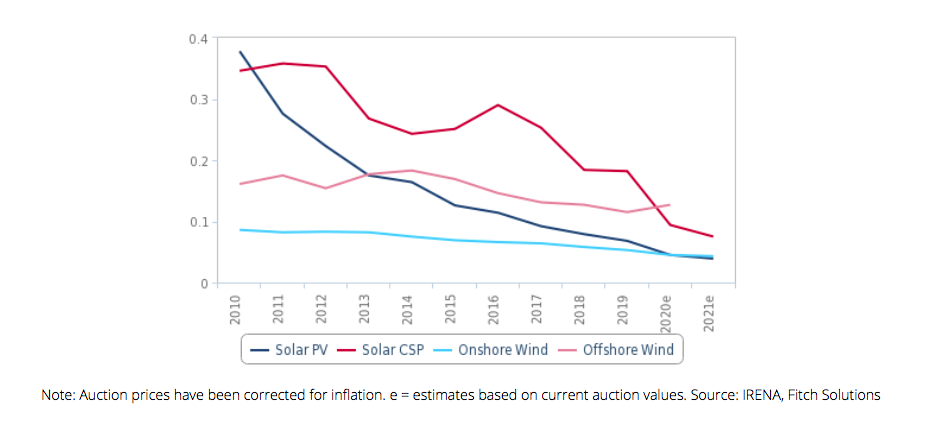
As decarbonisation targets drive emissions regulations, green hydrogen has significant potential to play an important role in decarbonising the mining sector in the coming years, market analyst Fitch Solutions says in its latest industry report.
Within the mining sector, Fitch expects transportation and energy storage to be the primary use applications of green hydrogen, with firms initially producing their own green hydrogen by investing in related on-site infrastructure.
Green hydrogen refers to the sourcing of hydrogen from renewable energy sources through electrolysis to split water. At present, green hydrogen accounts for only 0.1% of the global hydrogen market as its immense electricity requirements made production exceptionally expensive.

According to Fitch’s Power & Renewables team, electricity costs account for roughly 50-75% of total green hydrogen production costs; however, Fitch says the downward trend in renewables electricity costs will benefit the industry’s future growth.
Fitch asserts the use of green hydrogen will be one of the key factors to help decarbonise the mining and metals sector, via its transport and industrial production applications. Growing use of green hydrogen will prove beneficial to the mining and metals sector, increasing respective players’ social licenses to operate within their communities as well as increasing financing options by meeting rising ESG standards, Fitch maintains.
Within the mining sector, Fitch expects transportation and energy storage to be the primary use applications of green hydrogen. Green hydrogen will be increasingly utilised to adapt mining haulage fleets, with Anglo American serving as a prominent first mover in the industry, Fitch says.
Growing use of green hydrogen will increase respective players’ social licenses to operate within their communities as well as increasing financing options by meeting rising ESG standards
Anglo American announced in October 2019 a joint partnership with ENGIE to co-create the first green-hydrogen-powered mining truck. In November 2020, the firms reported that the electrolyser for the project had been delivered to the site by Nel Hydrogen Electrolyser AS, with the vehicle expected to debut in H1 20 21 at its Mogalakwena mine in South Africa.
Glencore has used a hydrogen energy storage unit and wind turbine to power its Raglan mine in Canada since 2015. Rio Tinto signed a Memorandum of Understanding (MOU) with Paul Wurth SA and SHS-Stahl- Holding-Saar GmbH & Co. KGaA to explore the transformation of iron ore pellets into low-carbon, hot briquetted iron using green hydrogen, and Fortescue entered a partnership with South Korean steelmaker POSCO to produce green hydrogen in December 2020, Fitch reports.
(Read the full report here)
2 Comments
Diego
Hello!
I am a consultant on Sustainability and Environmental Engineering. I can help to accelerate or finding out strategic solutuons oin the energy and water sectors.
With best regards,
Diego Lavarello
Dr. Gus Van Weert
Why go through the many steps of making green hydrogen to thermally reduce (intermediary) iron pellets for briquetting when the solar electricity can be directly applied to electrowinning carbon (and ignition) free iron (cathodes) from the ore?